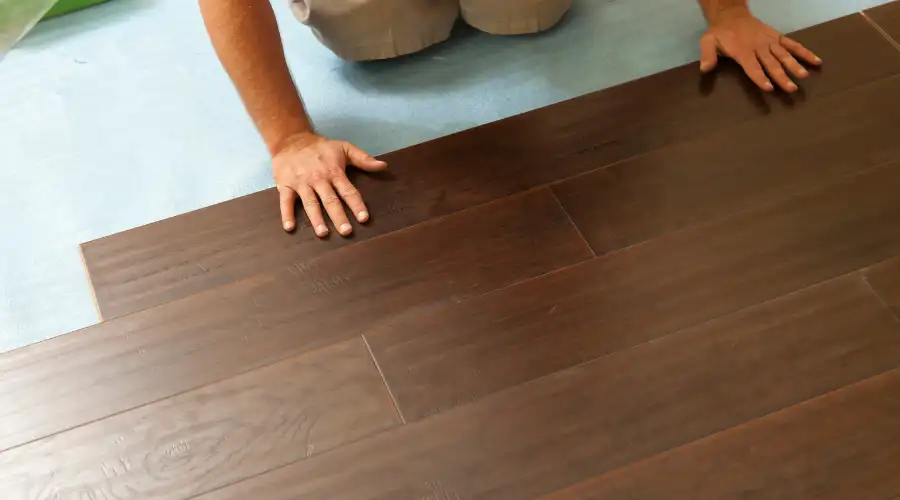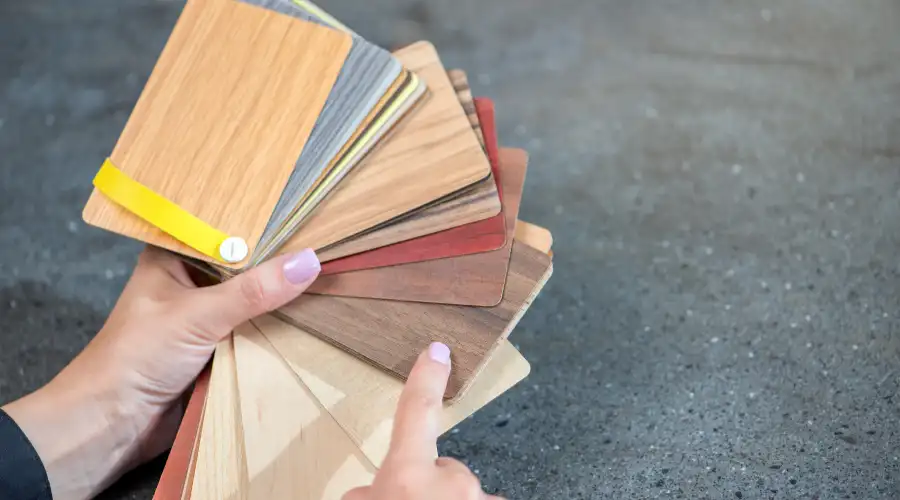Laminate wood flooring is a popular flooring option that is suitable for laying over concrete. It can be installed with little effort by following the right process and is thus a favourite among homeowners. However, careful preparation is essential to ensure lasting results since moisture can impact the flooring. Not following the proper installation process can cause major issues in the future. The following is an entire process to guide you in effectively installing elements like MDF, or laminate wood flooring on concrete so that you can obtain solid, durable performance in any room of your home.
Basics of Laminate Wood Flooring
Laminate wood flooring is an artificial product that is made by bonding several layers using a lamination process. The look of wood or stone is achieved using a clear top coat. The core is generally made of fiberboard and resin. Laminate wood flooring provides a convenient alternative to hardwood as it is strong and looks like wood. It is affordable, scratch-resistant, and impact-resistant. This makes it a great option for high-traffic or rough-use households. In addition, laminate wood flooring can be easily installed using a click-lock system instead of gluing or nailing. All these factors contribute to why laminate wood flooring is a convenient choice for those wanting style, strength, and easy installation.
Laminate Wood Flooring On Concrete: Installation Steps

Each of these is necessary to achieve a professional and long-lasting finish while installing laminate wood flooring.
Preparing the Concrete Subfloor
Prior to installing, the concrete subfloor should be properly evaluated and prepared. This includes checking for cleanliness, a level surface, dryness, and visible damage. You must sweep or vacuum the entire surface for dust, debris, and dirt. You may want to use a concrete cleaner for tougher stains or grease, followed by a wash on the whole surface. Let it dry out completely.
Check the concrete for cracks, sag, construction defects or holes. Rolled-up surfaces may cause floor movement or gaps between planks. Fill imperfections with a proper patching compound and finish it with a concrete trowel. It will be ready for the next process after levelling the surface and cleaning it. The concrete slab must also be cured and set for a minimum of 30 days before the flooring is installed.
Acclimatising the Laminate Flooring
The flooring must not be installed until it has gone through an acclimatisation period, where it will expand and contract, adjusting to the prevailing environment. The flooring should generally be left in its unopened packaging and laid flat in the installation area for a minimum of 48 hours. The room temperature and the humidity of the room environment must remain stable and consistent, as they would be in typical living conditions, throughout the acclimatisation duration.
Underlayment Selection and Laying
The next key step involves choosing the right underlayment as this greatly influences the performance and durability of laminate flooring. The underlayment performs several functions, such as moisture protection, sound absorption, and acting as a cushioning layer for comfort. Some of the common types include:
- Vapour Barrier Underlay: The best for concrete subfloors, this underlay shields the laminate from water that may penetrate the concrete. It prevents the formation of mould and mildew, and resists water damage. Such underlays are generally made of different types of plastic-based materials.
- Sound-Dampering Underlay: Useful in multi-level dwellings or apartments, this underlay minimises the noise transmitted through different floors and provides a quieter environment. Cork and foam are common underlay materials used for this purpose.
- Combined Underlay: A few underlays provide protection against both moisture and noise in one product. This makes them an effective and easy option. Materials like vinyl backings provide such protection.
Installing the Underlayment
Begin by washing the concrete floor again to have it dry and free of dust completely. Cut the underlayment to the size of the area and measure using a sharp utility knife. Place the underlayment over the whole floor, but in such a way that pieces do not overlap. Rather, put them next to each other and seal the joints with the right tape or adhesive according to the manufacturer’s guide. This aids in protecting the integrity of the moisture barrier and provides a smooth surface for laying the laminate planks.
Installing the Laminate Flooring
With the underlayment down and subfloor ready, the laminate flooring is now ready to be installed. Start by taking measurements of the room and laying out the plank pattern. Work from one corner of the room, row by row. Place spacers between the walls and planks to leave an expansion gap. The expansion gap is for the natural expansion and contraction of the laminate as temperatures and humidity levels change.
Secure the planks by using tongue and groove joints, screws or other fasteners as specified by the manufacturers. Tap the planks with a tapping block and rubber mallet to gently secure them together. Staggered joints in the rows will form a natural wood pattern and make the structure more solid. While progressing, check for alignment frequently and fasten each row precisely before moving on to the next.
Final Touches
After the installation of all rows, trim the bottom row to fit with a circular saw. Measure accurately, considering the expansion gap against the wall. Cut and install the planks into position and secure with a tight finish. Finish installing skirting boards throughout the room to cover expansion gaps and provide a smooth finish. Where the laminate borders other flooring types, fix transition strips to cover the gaps.
Maintenance And Care of Laminate Wood Flooring
- Use Furniture Pads: Put felt pads on the legs of furniture like chairs, tables and sofas. This stops them from scratching the floors when it is dragged across them.
- Add Rugs and Mats: Install rugs in the areas that are most used and mats where people enter. These cut down on the quantity of dirt, debris, and moisture that is transferred onto your floor.
- Maintain Humidity Levels: Laminate flooring is a sensitive material that reacts to humidity changes. Ensure stable indoor humidity through the use of a dehumidifier or air conditioner, particularly during monsoon or summer seasons.
- Trim Pet Nails: Pets are cute, but they may accidentally scratch your floors. Trimming their nails regularly will shield the surface and also keep your pets tidy.
- Rearrange Occasionally: If possible, rearrange furniture and rugs occasionally to prevent uneven wear and tear across the floor. This can also make your space look new with minimal effort.
- Shield from Sunlight: Direct sunlight can cause fading of laminate surfaces. Mounting curtains or blinds helps to diffuse direct rays and maintain the original colour and texture of the flooring.
Cost of Laminated Wood Flooring

Laminate wood flooring provides a budget-friendly solution to bring sophistication and strength to your home. Its large range of designs and ease of maintenance make it the favourite of Indian residents. The price of laminated wood flooring in India usually ranges from Rs. 50 to Rs. 250 per sq ft. However, the total price depends on design quality, brand, and the level of durability. Budget-friendly versions are perfect for budget renovations, whereas higher-end versions feature superior textures and finishes.
Installation Costs
Extra charges are added for installation of the flooring. The price of underlayment, which most laminate floors require for soundproofing and moisture protection, ranges from Rs. 15 to Rs. 40 per sq ft. Professional installation generally costs around Rs. 30 to Rs. 100 per sq ft, depending on location and complexity. Also consider costs for tools, mouldings and trims to be another Rs.10 to Rs.30 per sq ft. Considering all these factors, the overall flooring budget can be estimated accurately.
Conclusion
Wood flooring over concrete can add elegance and durability once installed precisely and maintained carefully. Proper prepping, accurate installation, and periodic care ensure a durable, neat finish. Moisture resistance, scratch resistance, and light protection guarantee that its beauty can endure for years. If maintained with proper care, laminate flooring can be a reliable and affordable option that will suit your room perfectly.

